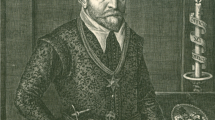Abstract
Introduction
Şemseddîn-i Itâkî is a key Turkish scientist in the field of anatomy. His book entitled Teşrih-ül Ebdan ve Tercümânı Kıbale-i Feylesûfan which was written in the seventeenth century is accepted as the first illustrated anatomy handwritten textbook in Turkish language.
Materials and methods
In this article, it was examined an original copy of Teşrih-ül Ebdan ve Tercümânı Kıbale-i Feylesûfan, which is available at the Süleymaniye Library in Istanbul, Turkey, as well as the transliteration of this book from old Turkish (Ottoman-Turkish) alphabet to contemporary Turkish alphabet by Esin Kâhya. In this book, the anatomical drawings and their descriptions were evaluated.
Results
In this ancient handwriting, Itâkî begins with thanking God and then describes the general structure of the organs, bones, nerves, muscles and vessels, supporting with various illustrations. These illustrations are mainly focused on cranial bones, muscles, cranial nerves, spinal nerves, stomach, intestines, urogenital system, bladder, trachea, larynx and bronchi.
Conclusion
While some of these illustrations are similar to the illustrations of the earlier authors such as Ahmed Ibn Mansur, Andreas Vesalius and Juan Valverde de Amusco, others are peculiar to this book. This book is highly significant for it’s being the first Turkish book in the field of anatomy in Ottoman-Turkish medicine and the text’s being supplemented by illustrations. This book is also a fundamental source for translation of anatomical terms into Turkish. Our knowledge of anatomy continues to improve thanks to the contributions of leading scientists such as Itâkî and, therefore, he deserves praise.
















Similar content being viewed by others
References
Acıduman A (2012) On the cranium and spine anatomy in Chief Physician Emir Çelebi’s renowned work Enmuzecu’t-Tibb (sample of medicine). Türk Nöroşir Derg 22:103–110
Acıduman A, Arda B (2014) On female reproductive system anatomy in Turkish medical works: 13th–18th centuries. Lokman Hekim J History Med Folk Med 4:29–43
Acıduman A, Arda B, Kökeş F (2006) A study on the “brain anatomy” chapters of Ibn Sina (Avicenna)’s monumental work El-Kânûn Fi’t-Tıbb (the canon of medicine) and Şemseddîn İtâkî’s illustrated anatomy book Teşrîhü’l-Ebdân ve Tercümân-ı Kıbâle-i Feylesûfân (anatomy of bodies and philosophical interpreter document). History of Med Stud 16:191–215
Adıvar AA (1943) Osmanlı Türklerinde ilim. Maarif Matbaası, İstanbul
Akar M (2015) Cerrahi Tekniklerin Resimsel Anlatimi. Art-Sanat Dergisi, pp 15–45
Akar M (2015) Tıp eğitiminde görsel sanatın etkisi. Sosyoloji Dergisi 3:355–380
Akdoğan I (2008) Anatomy in Europe and Ottoman empire during seventeenth century. Turkiye Klinikleri J Med Ethics 16:166–170
Akkin SM, Dinc G (2014) A Glimpse into the process of gaining permission for the educational dissection of human cadavers in the Ottoman empire. Clin Anat 27:964–971. https://doi.org/10.1002/ca.22421
Bahşi İ, Çetkin M, Orhan M (2016) Anatomy of kidney: a comparative historical study. Eur J Ther 22:66–71. https://doi.org/10.5578/GMJ.32152
Bahşi İ, Orhan M, Çetkin M (2018) The anatomy of spinal nerves in the “Teşrihü’l-Ebdan Min e’t-Tıb” written in the fourteenth century. Lokman Hekim J History Med Folk Med 8:133–137. https://doi.org/10.31020/mutftd.419223
Bahşi İ, Orhan M, Çetkin M, Turhan B, Sayın S (2017) Anatomy of cranial nerves in the first Turkish illustrated anatomy manuscript. Childs Nerv Syst 33:1855–1862. https://doi.org/10.1007/s00381-016-3212-1
Batırel HF (1999) Early Islamic physicians and thorax. Ann Thorac Surg 67:578–580. https://doi.org/10.1016/S0003-4975(98)01295-8
Bayat AH (2010) Tıp Tarihi. Merkezefendi Geleneksel Tıp Derneği, İstanbul
Çelik N (2015) The start of conducting dissection in Ottoman empire. Int J Basic Clin Med 3:53–59
Çetkin M, Orhan M, Bahşi İ, Turhan B (2017) Anatomy of spinal nerves in the first Turkish illustrated anatomy handwritten textbook. Childs Nerv Syst 33:205–209. https://doi.org/10.1007/s00381-016-3136-9
Çıkmaz S (2006) Türkçe anatomi terimlerinin etimolojik ve semantik açıdan incelenmesi. Trakya Üniversitesi, Edirne
Itâkî Ş (1632) Teşrih-ül Ebdan ve Tercümânı Kıbale-i Feylesûfan. Hüsrev Paşa 464 at the Süleymaniye Manuscript Library, Istanbul
Kâhya E (1979) Bizde disseksiyon ne zaman ve nasıl başladı? Belleten 43:739–759
Kâhya E (1988) Şemseddîn-i Itâkî. Türkiye Diyanet Vakfı İslam Ansiklopedisi. Türkiye Diyanet Vakfı Yayın Matbaacılık, İstanbul
Kâhya E (1996) Şemseddîn-i İtakî’nin Resimli Anatomi Kitabı. Ankara Kültür Merkezi Yayınları, Ankara
Kâhya E, Bilgen B (2008) Kitab-ı Teşrihü’l-ebdan min e’t-tıb. Atatürk Kültür Merkezi, Ankara
Mansur A (1386) Teşrihü’l-Ebdan Min e’t-Tıb. Ayasofya 3598 at the Süleymaniye Manuscript Library, Istanbul
Margócsy D, Somos M, Joffe SN (2017) Vesalius’ Fabrica: a report on the worldwide census of the 1543 and 1555 editions. Soc History Med 30:201–223
Mossensohn MS (2008) An Ottoman observer of central European surgery in the middle of the seventeenth century. Vesalius 1:4–7
Tiryaki T (2008) 14 Mart Tıp Bayramı. Türkiye Çocuk Hastalıkları Dergisi 2
Tsoucalas G, Sgantzos M (2017) A historical glance at the Arabo-Islamic surgical instruments during the ages. World J Surg 41:1636–1645. https://doi.org/10.1007/s00268-017-3910-1
Turgut M (2008) Şemseddin-i Itaki’s contributions to neuroanatomy and embryology in the seventeenth century. Childs Nerv Syst 24:1281–1282. https://doi.org/10.1007/s00381-008-0642-4
Ulucam E, Mesut R, Gökçe N (2005) Neuroanatomy in Tesrih-i Ebdan: a study on a book which is written in Ottoman era. Neuroanatomy 4:31–34
Uzel İ (1984) 13–18. Yüzyıllar Arasında Anadoluda Ağız ve Dişhastalıkları Tedavisi. G Ü Dişhek Fak Der 1:178–190
Valverde de Amusco J (1556) Historia de la composicion del cuerpo humano. Antonio Salamanca, Rome
Valverde de Amusco J (1607) Anatome corporis humani. Studio et industria Ivntarvm
Vesalius A (1543) De Humani Corporis Fabrica. Johan Oporinus, Basel
Zeren Z (1959) Anatomi Sözlüğü ve Türk Anatomi Terimleri. Çelikcilt Matbaası, İstanbul
Author information
Authors and Affiliations
Contributions
İB: protocol/project development, data collection or management, data analysis and manuscript writing/editing. AB: protocol/project development, data collection or management, data analysis and manuscript writing/editing
Corresponding author
Ethics declarations
Conflict of interest
The authors declare that they have no conflicts of interest.
Additional information
Publisher's Note
Springer Nature remains neutral with regard to jurisdictional claims in published maps and institutional affiliations.
Rights and permissions
About this article
Cite this article
Bahşi, İ., Bahşi, A. “Teşrih-ül Ebdan ve Tercümânı Kıbale-i Feylesûfan”: the first illustrated anatomy handwritten textbook in Ottoman-Turkish medicine. Surg Radiol Anat 41, 1135–1146 (2019). https://doi.org/10.1007/s00276-019-02292-x
Received:
Accepted:
Published:
Issue Date:
DOI: https://doi.org/10.1007/s00276-019-02292-x




